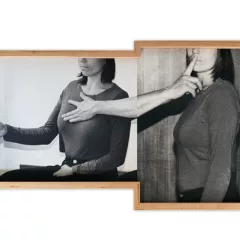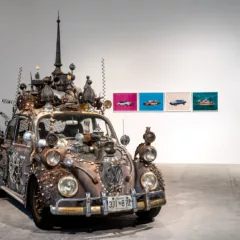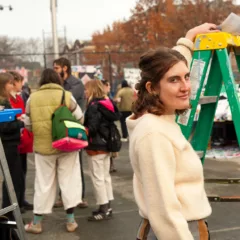Libby and I met recently with the new brain trust at the Philadelphia Art Alliance, Chief Curator Sarah Archer and Executive Director Molly Dougherty. In a broad-ranging discussion about Philadelphia’s art scene and institutions and the PAA’s long history as an on-again-off-again player in the city, Archer mentioned they were very interested in exploring their mission — craft and design — in a way that breaks the mold of the traditional craft exhibit with objects on pedestals and in vitrines. They want to broaden their program to include a discussion of the making of objects and the thinking behind the making. Showcasing work that is highly crafted and talking about the making of objects — whether it’s ceramics or painting or sculpture or multi-media installation, as in their current Miss Rockaway Armada exhibit — is a great idea.
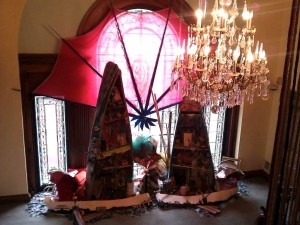
And in fact, it seems to me that what’s on display right now at ICA in not one but two exhibits, is a very big look at the crafting of objects.
Charline von Heyl’s abstract paintings downstairs and Bill Walton’s Studio in the Project Space upstairs present works that are highly crafted. And in the case of Walton’s Studio, the presence of the studio and the works is a kind of gift. It’s not possible to think about crafting without thinking about the artist doing the work. To see the studio (even though the artist is not in it) allows a way into the thinking process of the artist, something crucial when talking about art.
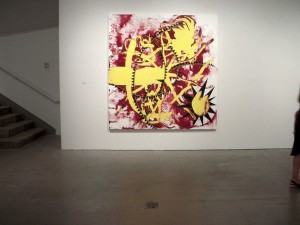
Many of Von Heyl’s abstract works include graphical elements in the midst of gestural abstraction. The artist talks about her works as places for erasures or obliterations. Her painting process builds up and subtracts from the surface with brushing, scraping, rubbing with rags — and printing in the oldest printing process known, handprints and finger marks on the surface.
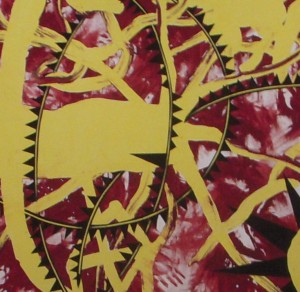
Throughout, the paintings and works on paper broadcast an air of decoration, reinforced by several repeat motifs that, while added seemingly haphazardly, actually create unity out of the presumed chaos. In particular, the use of handprints, darts (like egg and dart motifs without the eggs), grids and zig zag lines unify the paintings both within each one and amongs the group of works on display. These elements might be abstract but they refer to elements easily recognizable in the real world and provide a way in to the artist’s thinking.
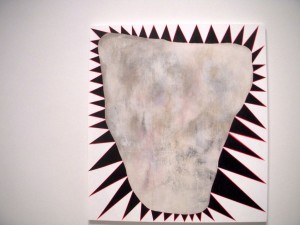
The more you look at these paintings, and the highly worked and highly designed black and white works on paper, the more you can see the world in them.
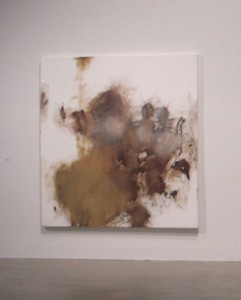
Some of von Heyl’s paintings are more swooshy and abstract, and others are more tightly scripted and decorative. What they all have going for them is their generous size (most are 82×74″ or 7x6ft) which allows you to stand close and have them take over your field of vision. It’s there that the colors and surface details become the main elements –and her heavily-orchestrated and interesting process — shines.
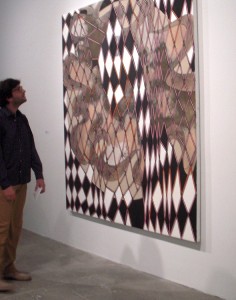
While she is a painter’s painter, for sure, I think that the artist’s real world references and her interesting surfaces and colors transcend the usual insularity of abstract painting. Gestural painting emits a kind of bravado and while these works have plenty of bravado (and bravura) you will find their bold graphic sensibility something to grab on to — something entertaining, almost. All those darts; the black and white diamond patterning that is so pleasingly familiar (decks of cards? kitchen floors?); the cave-wall handprints; the grids; all are things that are in the human experiential memory bank. We know them, we feel them.
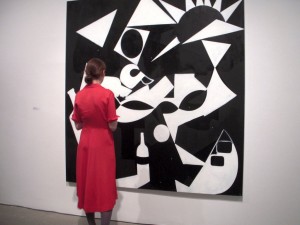
This is work that will grow on you. And if you are smitten, as I am becoming, grab the catalog which has great full color reproductions of all the works, which unfold to poster size so you can get a big eyeful. The essays by Jenelle Porter bring up great points (although I have to quibble with the idea that the painting titled Big Joy is joyful — it might be a big sorrow instead, despite the title). And that brings up the whole issue of titles of abstract works leading to an interpretation. These works are for the most part titled. The seduction of reading meaning into a work from the title is great in any abstract piece and while it helps the viewer to have something to hold on to, it’s also a kind of trap that may limit interpretation by offering one.
Bill Walton’s Studio
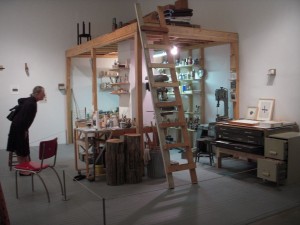
To see the late artist’s ship-tight studio installed, with room left over, in the corner of the Project Space is to know this was an artist of compactness. His works, which are carefully-made, tiny charged chunks that sit unassuming on a wall or shelf are like the Chinese scholar’s rocks — things to be reflected on; things that take you on an inner journey.
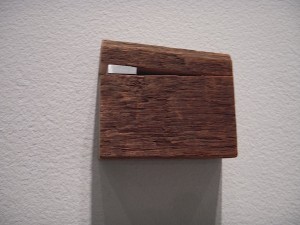
This studio view without the artist allows you in to the back space in which the magic happened for the artist. Everything is orderly as you would expect of this artist of the exacting moment, but the sheer number of things in the work space is astonishing. From all this stuff the artist whittled down his ideas into just the right chunk of wood, at the exact right size and feel, held in precise relation with another object.
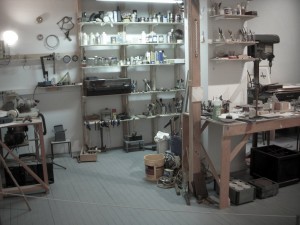
In a similar way, poets live with the clutter of their virtual word studios — jars of vocabulary; boxes full of phrases heard and stored for rumination; drawers jammed with verbs — everything ready to make just the right tight little poem.
The beauty of Walton’s and von Heyl’s works is revealed slowly. The consideration of materials and making are integral to understanding and appreciating.



